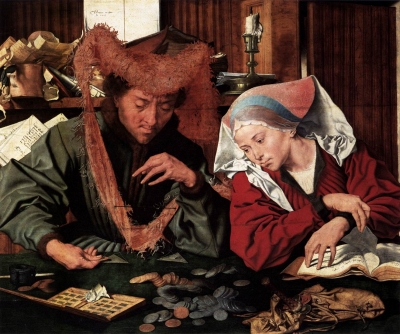Why is the bullion system different from the coin system?
 Derived from the name of the French finance minister under Louis XIII, Claude de Bullion, ‘bullions’ are bars or ingots of valuable metals like gold, silver, and platinum.
Derived from the name of the French finance minister under Louis XIII, Claude de Bullion, ‘bullions’ are bars or ingots of valuable metals like gold, silver, and platinum.The form of the metal, however, is not important in this system; instead, it is the weight and purity that count.
Though bullions ensured purity, it was difficult to get enough quantity of gold and silver. That was when coins made of metal alloys appeared in the market. Their values were also fixed, depending on the metal used.
Today, bullion coins are meant mostly for the purpose of investment, and are minted by official agencies. Though they have the status of legal tender, such coins do not enter common circulation.
They are mainly seen in the form of bars and jewellery. Yet, bullion coins like the Maria Theresa thaler of Europe, and the Krugerrand of South Africa were in circulation throughout the 20th century.

 The significance of Ancient Rome in history is unparalleled. Many aspects of present day society, including laws and religion have been influenced by Ancient Rome. Well, there was much more to this mighty empire. One such was its system of coins, which influenced the whole of Europe.
The significance of Ancient Rome in history is unparalleled. Many aspects of present day society, including laws and religion have been influenced by Ancient Rome. Well, there was much more to this mighty empire. One such was its system of coins, which influenced the whole of Europe.
 It is believed that the earliest coins in Rome were produced in the 4th century BC in Italy. Their minting continued for the next eight centuries throughout the empire. The first metal currencies were cast out of irregular lumps of bronze and called ‘aes rude’.
It is believed that the earliest coins in Rome were produced in the 4th century BC in Italy. Their minting continued for the next eight centuries throughout the empire. The first metal currencies were cast out of irregular lumps of bronze and called ‘aes rude’. Considered as one of the earliest mass forms of coinage, silver currencies of varied shapes and sizes have been used for more than 1000 years.
Considered as one of the earliest mass forms of coinage, silver currencies of varied shapes and sizes have been used for more than 1000 years. It is believed that coins came into use during the 7th century BC. Coins appeared in different forms in different parts of the world, and it is quite difficult to trace their origins.
It is believed that coins came into use during the 7th century BC. Coins appeared in different forms in different parts of the world, and it is quite difficult to trace their origins. History reveals that the money we see today has appeared in differing forms before- as cattle, as salt, as tea, as tobacco etc. But none of these lasted very long. Over a period of time, the need to develop currencies that were handy and long lasting arose. This led to the birth of metals as money.
History reveals that the money we see today has appeared in differing forms before- as cattle, as salt, as tea, as tobacco etc. But none of these lasted very long. Over a period of time, the need to develop currencies that were handy and long lasting arose. This led to the birth of metals as money. Giro was a mode of banking first used by Egyptians in the 4th century BC. The idea behind the system was to transfer money from one person to another. State granary units acted as banks then, and accepted ‘giro’ payments.
Giro was a mode of banking first used by Egyptians in the 4th century BC. The idea behind the system was to transfer money from one person to another. State granary units acted as banks then, and accepted ‘giro’ payments. At a time when a tiny card can facilitate payments of all kind, it might seem strange that centuries ago, people used ‘tea’ as a mode of payment. But yes, some actually did!
At a time when a tiny card can facilitate payments of all kind, it might seem strange that centuries ago, people used ‘tea’ as a mode of payment. But yes, some actually did!

 No diet can be complete without a pinch of salt. Not only does this mineral make our food tasty, but it also helps in preserving them. A healthy person should have an adequate amount of salt in his body to avoid many diseases.
No diet can be complete without a pinch of salt. Not only does this mineral make our food tasty, but it also helps in preserving them. A healthy person should have an adequate amount of salt in his body to avoid many diseases. Long before currencies came into existence, people used different mediums for payment. One such medium was shells. They were exchanged for the goods and services one wanted.
Long before currencies came into existence, people used different mediums for payment. One such medium was shells. They were exchanged for the goods and services one wanted. Exchanging a toy for another, or a book for a new one, seems interesting. But what would happen if you were to exchange your essentials for things that were equally necessary? Such a transaction, called bartering, is where two beneficiaries exchange goods and services without giving or taking money.
Exchanging a toy for another, or a book for a new one, seems interesting. But what would happen if you were to exchange your essentials for things that were equally necessary? Such a transaction, called bartering, is where two beneficiaries exchange goods and services without giving or taking money.